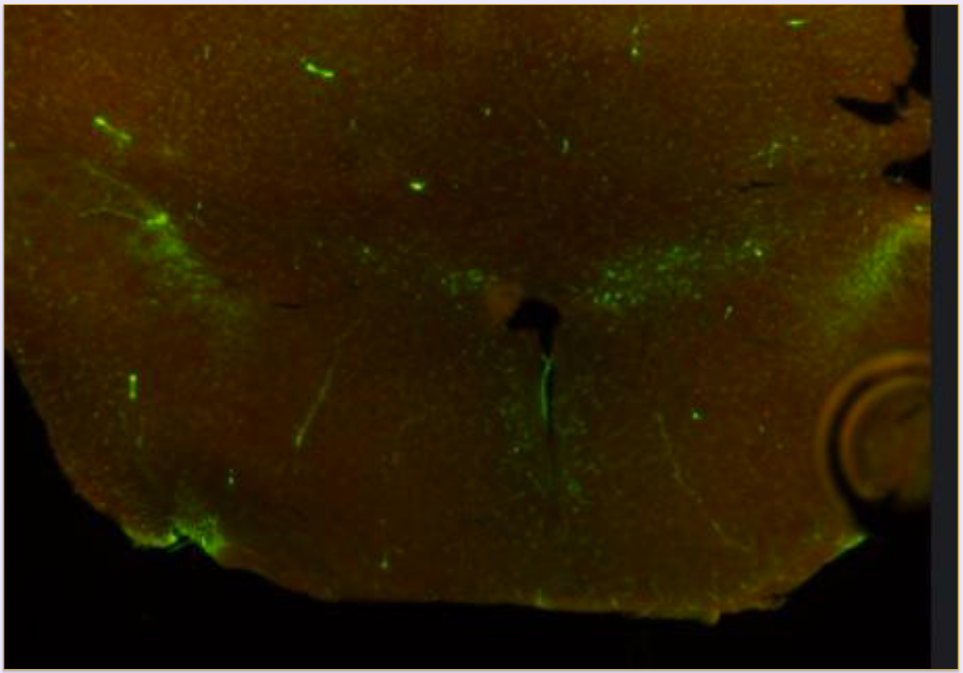Testing Novel Drug Efficacy with Immunohistochemistry of Mouse Ventral Tegmental Area (VTA)
Testing Novel Drug Efficacy with Immunohistochemistry of Mouse Ventral Tegmental Area (VTA) PDF File
I. Introduction
The Ventral Tegmental Area (VTA) is a region indicative of the efficacy of dopamine release for opioid-induced reward. Efficacy is measured by using immunohistochemistry on this region of the brain. Immunohistochemistry uses fluorescent tags on various mammalian-sourced antigens that can latch onto the desired chemicals or proteins on mouse brain tissue. A Keyence microscope then flashes measured light wavelengths of light onto the samples to trigger the antibodies to fluoresce, creating a clear picture of the chemical reactions that were occuring at the time of perfusion. This allows the different aspects of the chemical pathways to be identified in the VTA. Chemicals and structures such as neuron nuclei, dopamine, and early gene c-Fos are capable of being tagged with antibodies and are used to indicate a drug’s efficacy.
II. Methods
Twelve mice were treated with a combination of opioids and the novel drug, or no drug at all (control) before perfusion. The brains were perfused and sliced to isolate the VTA. After the slices were made, they were stained with fluorescent antigens.
- Nuclei of neurons were identified using DAPI - Blue
- Dopamine was identified using an antibody for Tyrosine Hydroxylase - Green
- Neuronal activation was measured using an antibody for the immediate early gene c-Fos - Red
After staining, the slices were placed onto slides and viewed with the Keyence Microscope.

Central green coloration indicates dopamine.
III. Expected Results
Efficacy will be quantified by the number of bright red dots - indicative of neuronal activation - within the VTA. Hopefully, they will show that these novel drugs, for GPR171, either decrease dopamine or have no effect (that latter being our hypothesis). Current results have shown that there has been significant dopamine activation and neuronal activation within the VTA.
IV. Conclusions
Results have yet to be determined and make this study inconclusive for the moment. Further research is needed to establish a significant conclusion.
Study conducted with funding from a USU Undergraduate Research and Creative Opportunity Grant and lab assistance from the USU Department of Biology.

